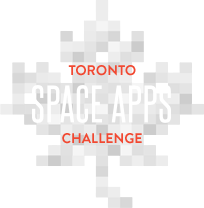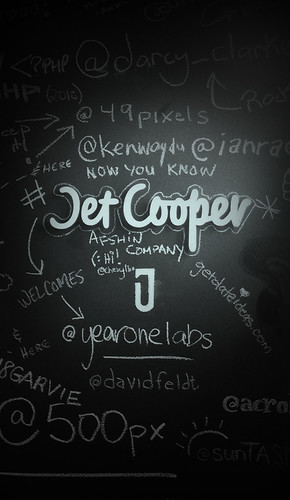Oh wait, it is!
NASA and the European Space Agency are hosting a hackathon in 75 cities around the world. It includes Canadian events in Toronto Follow @SpaceApps_TO and Winnipeg.
“The International Space Apps Challenge is a technology development event during which citizens from around the world work together to solve challenges relevant to improving life on Earth and life in space.”
The Toronto event is focusing on 24 of the challenges provided by NASA (the full list of challenges is 50 large). The challenges provide a diverse set of skills and participation. Skills include software, hardware, strategy, and design. There are a number of challenges that include the interpretation of economic data and others that involve air traffic control.
Tonight's finale: As the @NHL season begins, I see the lights of Toronto, home of my favourite team – Go @MapleLeafs pic.twitter.com/b31toywx
— Chris Hadfield (@Cmdr_Hadfield) January 19, 2013
With the amazing photos that Commander Hadfield Follow @Cmdr_Hadfield is publishing on Twitter. Hopefully there is a renewed interest in the Canadian space industry. (We did build the Canadarm…) And the commericalization of space exploration with the X PRIZE and SpaceX Dragon spacecraft. It’s an amazing chance to participate in a grassroots exploration of space technologies and data.
List of Challenges in Toronto Space Apps Challenge
- ESA 3D Printing Contest
- Create an open source 3D model of space hardware that can be generated by a 3D printer.
- My Space Cal
- Combine the past and future time schedules of satellites into a common calendar that the world can easily access.
- Wish You Were Here
- Develop a compelling representation of weather on Mars.
- Tour of the Moon
- Enable humans worldwide to take an interactive tour of the Moon.
- The Blue Marble
- Rethink space-based Earth imagery and make it more accessible to a broad audience of space enthusiasts.
- Solar Flare
- Visualize invisible (to the human eye) phenomena that can affect so many vital terrestrial activities.
- Seeing Water From Space
- Create a visualization of Chile water resources, showing how they have changed over time relative to changes in climate.
- SCISTARTER Citizen Science
- Help humans understand and analyze microbial communities and compare with microbes on the International Space Station.
- Renewable Energy Explorer
- Create an app that integrates wind, solar, and geothermal energy data to show where combining them would have the greatest potential.
- Incentives Tied to Utility Rates
- Help consumers find relevant incentives, tax rebates, and savings for their energy efficiency and renewable energy efforts.
- Earth Day Challenge
- Explore the history of Earth Day using environmental data since 1970.
- Aligning the Stars
- Match and align the stars in Aurora imagery taken by Astronauts on the International Space Station.
- “Catch a Meteor” Tracker
- Create an app that would allow observers of a meteor shower to trace the location, color and size of the shooting star.
- Database of Near Earth Objects
- Create a platform to enables citizen astronomers to register, submit findings, and help rank the findings of other citizen astronomers.
- CubeSats for Asteroid Exploration
- Create a CubeSat design for a mission to astroids near Earth.
- Deployable Greenhouse
- Develop a deployable greenhouse that could be used on a space mission to the Moon or Mars.
- Hitch a Ride to Mars
- Design a CubeSat for an upcoming Mars mission.
- My Virtual Mentor
- Expand the online presence for the NASA GIRLS program to mobile and/or tablet platforms.
- “No Delays” Air Traffic Management
- Create a visualization that increases understanding of the problems of our current air traffic control system.
- Space Station Benefits to Humanity
- Develop a tool to improve the understanding of the incredible benefits that International Space Station is delivering back to Earth.
- Spot the Station
- Extend the functionality of the Spot the Station site that allows you to share your sightings of the International Space Station with others.
- Syncing NASA’s Open Source Projects
- Create an application that mirrors changes to NASA’s github presence.
- NASA’s Impact on the Economy
- Share the story of NASA’s economic impact in a new and compelling way.
- Adopt-a-Spacecraft: Voyager 1
- Humanize the Voyager mission through the creation of a data visualization, app, or even a physical object.
It’s an amazing time to be interested in space exploration. Plan on exploring at the ROM on April 19-21, 2013.



